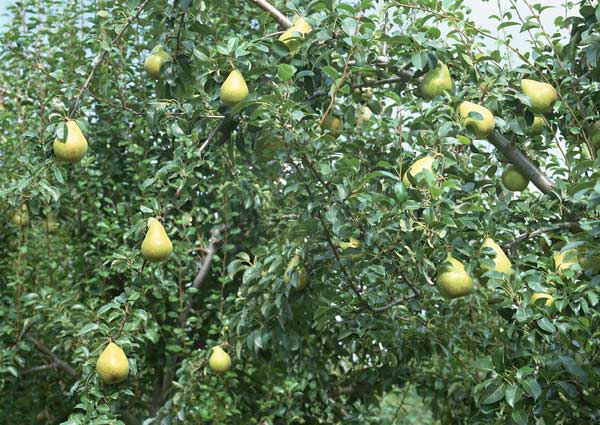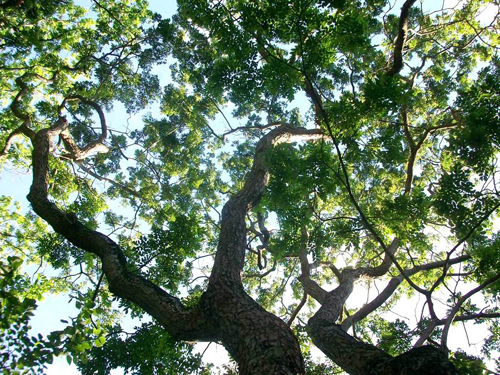Three links that must be paid attention to in Huanghua Pear Culture
Pear is a kind of fruit that we often see and is loved by many people. Huanghua pear tree is a kind of tree that can produce sweet fruit pear. Let's take a look at how to cultivate Huanghua pear tree to make it bear many fruits.

1. The propagation method of Huanghua pear.
The main results are as follows: 1. It is appropriate for the cuttings to be in March of each year. In other seasons, the survival rate of cuttings is low and the cost is high. Before cuttings, the cuttings are soaked in 1000-fold chlorothalonil solution for 5 minutes, and then soak the base of cuttings with 25010-6 indole butyric acid rooting solution for 6 hours. After taking out cuttings, the rooting rate can reach more than 80% after careful management. Determine the use of a certain concentration after other rooting experiments. Otherwise, too high concentration will inhibit the rooting of cuttings. If it is difficult to buy a rooting agent or there is no rooting agent, soak the lower end of the cuttings with 5% sucrose solution, and then take out the cuttings after 12 hours. This method also has a better rooting effect.
2. When inserting the cuttings, first punch holes in the sterilized cuttings bed or nutrition bag with a stick slightly larger than the cuttings. The cuttings are drilled vertically according to the row spacing of 8 meters × 8 meters, with a depth of 68 meters, which is equal to the depth of the cuttings. Then insert the cuttings with the drug treatment number into the hole. After the cuttings are pulled out of the soil, at least two or more bud holes should be left on the soil surface. After insertion, the holes should be compacted with fingers or sticks. Then immediately drench water to set the plant.

II. Pruning principles of Huanghua Pear
The main results are as follows: 1. In the process of crown development, whether it is to cultivate the fruiting branch group or to maintain the fruiting ability of the fruiting branch group, we must control some branch groups and develop some branch groups. In general, the upper dorsal branch group should be properly controlled, while the contralateral branch group should be selected to retain strong branches as extended branches to promote its development, so as to ease the tree potential and stabilize the branch group. In pruning, attention should be paid to the reasonable configuration of large, medium and small branch groups. In the case of prosperous trees, the cultivation of an appropriate amount of large branch groups is conducive to maintaining more medium and branchlet groups, and maintaining an appropriate amount of development of branch groups is conducive to the stability of other branch groups.
2. The compact structure of the twig group is a necessary condition for stable and high yield, but it is difficult to get good results only by paying attention to the treatment of the branch group itself. Only for some branch groups which have room for development and let them develop year by year, can the branches of the other branch groups be compact.
3. the method of thinning or shrinking can not be used to control the density of branch groups. in a growing tree, even if the thinning is very heavy in winter, it seems that the branch group is very sparse, but because the branch group is unstable in terms of branch quantity, once the branches grow into leaves, it will affect the ventilation and light transmission conditions inside the crown.

III. Pest control of Huanghua pear tree
1. Pear scab: in July, pear scab began to infect fruit. At the initial stage of fruit infection, there are light yellow spots, slightly sunken after enlarged spots, black mold, and then cork and cracks in the disease spots. The prevention and control measures are as follows: spraying 1-200 Bordeaux solution in the young fruit stage, and 1000-1500 times solution of 21% strychomycin, etc.
2. Pear powdery mildew: it often harms old leaves. Generally, there are multiple disease spots on each leaf, and then yellow spots are produced in the disease spots, which gradually turn into black. when there is a sudden drop of rainstorm in midsummer, the disease is easy to spread. Prevention and control measures: spray polyantimycin 1000 times, Dabao 1200 times, triadimefon EC 1500 times in mid-July.
3. Pear heart borer: the first-second generation larvae of this insect mainly harm the treetops, and after the third generation, the fruit borer mainly harms the pear fruit. The fruit borer's pores are small and difficult to find, but the fruit pores are large and obvious. Prevention and control measures: 3000 times of green kungfu spray, 3000 times of diflubenzuron, 2500 times of Lesben, etc.
4. Pear weevil. July is the fruit period of pear weevil damage, which often causes a large number of fruits to fall to the ground. Control measures: artificially pick up the harmful fruit of pear weevil, and spray 2.5% trimethoprim EC 2000 times or annihilate 3000 times.

The above is about the cultivation and care of the main matters of Huanghua pear tree introduction, after reading the above introduction, do you have a relatively clear idea on how to cultivate Huanghua pear tree? If the answer is yes, then do not hesitate to try to plant a yellow pear tree, that is, you can green the environment and eat fruit.
Hurry up and try to plant a yellow pear tree, which can green the environment and eat fruit.
Related
- Wuhan Hospital Iron Tree Blooming Result Was Instantly Frightened by the Gardener Master
- Which variety of camellia is the most fragrant and best? Which one do you like best?
- What is the small blue coat, the breeding methods and matters needing attention of the succulent plant
- Dormancy time and maintenance management of succulent plants during dormancy
- Minas succulent how to raise, Minas succulent plant pictures
- What are the varieties of winter succulent plants
- How to raise succulent plants in twelve rolls? let's take a look at some experience of breeding twelve rolls.
- Attention should be paid to water control for succulent plants during dormant period (winter and summer)
- Watering experience of twelve rolls of succulent plants
- Techniques for fertilizing succulent plants. An article will let you know how to fertilize succulent plants.



